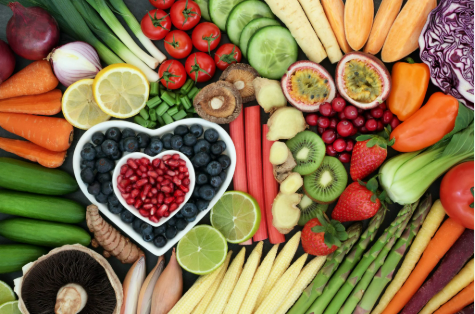
There’s a unique kind of magic that happens around the world’s dinner tables. In every corner of the globe, from street food stalls in Bangkok to family kitchens in Tuscany, food serves as more than sustenance — it’s a storyteller. Every bite carries with it tales of history, migration, celebration, and resilience. Welcome to a whirlwind culinary journey, where we explore the diverse and delicious world of global cuisines. No passport required — just your curiosity and appetite.
Asia: A Symphony of Spices and Simplicity
Thailand – The Art of Balance
Thai cuisine is a harmonious dance of flavors — sweet, salty, sour, bitter, and spicy — all blended to perfection. A classic dish like Pad Thai illustrates this complexity. Thin rice noodles stir-fried with tamarind paste, fish sauce, palm sugar, chili, and lime deliver a multi-dimensional experience.
Another staple is Tom Yum Goong, a hot and sour soup loaded with lemongrass, galangal, kaffir lime leaves, and shrimp. What makes Thai food so globally loved is its fearless approach to bold seasoning and fresh herbs.
Japan – Minimalism and Mastery
Japanese cuisine celebrates the purity of ingredients and meticulous technique. A meal is often designed around the season, reflecting nature’s cycles. From the delicate sashimi to the comforting simplicity of miso soup, Japanese dishes emphasize umami — the savory “fifth taste.”
Sushi, perhaps the most famous export, began as street food and evolved into an art form. Each piece is a study in balance, with vinegared rice, fresh fish, and a dab of wasabi — precise and perfect.
India – A Spice Lover’s Paradise
Indian cuisine is vast, varied, and vibrant. From the rich, buttery curries of the north to the coconut-based dishes of the south, every region offers a different experience. Spice is central — not always in heat, but in depth and layering.
Biryani, a fragrant rice dish layered with marinated meat or vegetables, saffron, and fried onions, reflects Mughal influences. Meanwhile, masoor dal, a simple red lentil stew, showcases home-style cooking at its best.
The magic of Indian food lies in its use of spices like cumin, coriander, turmeric, and garam masala, each contributing to a mosaic of flavor.
Europe: Tradition, Technique, and Terroir
Italy – Passion on a Plate
Few cuisines ignite as much love as Italian. It’s not just the food — it’s the way meals are a celebration of life. Pasta in all its forms — whether a humble spaghetti aglio e olio or a luxurious lasagna — captures hearts worldwide.
Italy is also home to risottos, antipasti, and of course, pizza. But beyond the classics lies a commitment to regionality. Ossobuco from Milan, arancini from Sicily, and ribollita from Tuscany show the range and depth of Italian culinary heritage.
Pair it with wine, linger over dessert, and you’ve got la dolce vita in edible form.
France – Haute Cuisine and Homestyle Fare
French cuisine is often associated with fine dining, but it’s equally about rustic comfort food. Yes, you’ll find Michelin-starred kitchens perfecting coq au vin and duck confit, but also cozy bistros serving ratatouille and quiche Lorraine.
From buttery croissants at breakfast to delicate macarons with tea, French cooking is elegant, exacting, and utterly satisfying. The cuisine has influenced chefs globally, thanks in part to Auguste Escoffier and the codification of classical techniques.
And let’s not forget the cheese — over 400 varieties! Add a crusty baguette and a glass of Bordeaux, and you’ve got a meal fit for royalty.
Spain – Tapas and Traditions
Spanish cuisine invites you to slow down, share, and savor. Tapas, small plates meant for communal eating, range from garlicky shrimp (gambas al ajillo) to potato omelets (tortilla española).
Then there’s paella, Spain’s most iconic dish, a saffron-infused rice extravaganza often cooked over open flame. Spanish food is deeply regional: Catalonia has its seafood stews, Andalusia its chilled gazpacho, and the Basque Country its pintxos.
A meal in Spain isn’t just about eating — it’s a social ritual, a celebration of time well spent.
The Middle East: Rich Heritage and Fragrant Feasts
Middle Eastern cuisine is built on bold spices, fresh herbs, and deep traditions. Staples like hummus, falafel, and shawarma have become global favorites, but there’s so much more to discover.
Lebanon – Mezze Magic
Lebanese cuisine is famous for its mezze culture — a spread of small dishes that come before the main meal. Think baba ghanoush, tabbouleh, and stuffed grape leaves.
Kibbeh, often called the national dish, is a bulgur and minced meat croquette, seasoned with spices like cinnamon and allspice. It’s a balance of texture, flavor, and family tradition.
Iran – The Poetry of Persian Food
Persian cuisine is a treasure trove of aroma and artistry. Fesenjan, a rich stew made with pomegranate molasses and walnuts, served over fluffy saffron rice, is a masterpiece of flavor contrast.
Dried fruits, nuts, fresh herbs, and subtle spices like cardamom and rose are common. It’s not just about eating — Persian meals are poetic expressions of culture and hospitality.
Africa: Earthy, Spicy, and Deeply Rooted
Africa’s culinary landscape is as diverse as its geography. From North Africa’s fragrant spice blends to West Africa’s rich stews and South Africa’s fusion of influences, each region tells a distinct story.
Morocco – Spices and Soul
Moroccan food is a sensory experience. The iconic tagine — a slow-cooked stew named after its conical clay pot — layers meat or vegetables with dried fruits, olives, and warming spices like cinnamon and saffron.
Couscous is another staple, often steamed to perfection and served with vegetables and meat broth. The country’s famed ras el hanout spice blend can include over 30 different spices — each vendor has their own recipe.
Nigeria – Bold and Beautiful
Nigerian cuisine is hearty, spicy, and packed with flavor. Dishes like jollof rice (a tomato-based rice dish popular across West Africa), egusi soup (made with melon seeds), and suya (grilled spicy meat skewers) are just the beginning.
Food is central to celebration and community — no party is complete without a lavish spread.
South Africa – A Culinary Melting Pot
Thanks to its diverse population, South African cuisine blends indigenous ingredients with Dutch, Indian, and Malay influences. You’ll find bobotie (a spiced meat pie with custard topping), bunny chow (a hollowed-out bread loaf filled with curry), and biltong (air-dried meat).
It’s a cuisine of adaptation and innovation, reflecting the country’s complex history.
Latin America: Colorful, Zesty, and Full of Life
Latin American food pulses with energy, color, and a love of flavor. From Mexico’s spice-laden dishes to Brazil’s Afro-Portuguese influences, this is food that dances on the tongue.
Mexico – Spice and Soul
Mexican food is one of the world’s most beloved cuisines — and for good reason. Tacos, enchiladas, tamales, mole — each dish is layered with history and regional pride.
Take mole poblano, a sauce with over 20 ingredients including chocolate, chili, and spices. Or pozole, a hearty hominy soup traditionally eaten during celebrations.
Mexican street food culture is also legendary. Elote (grilled corn), tostadas, and quesadillas offer quick, bold bites that showcase culinary creativity.
Brazil – Diversity on a Plate
Brazil’s cuisine is as vast as its landscape. Feijoada, a black bean and pork stew, is the national dish and reflects African and Portuguese influences. The Amazon region contributes ingredients like açaí, cassava, and exotic fruits.
Street foods like coxinha (shredded chicken croquettes) and pão de queijo (cheese bread) show the everyday joy of Brazilian eating.
And of course, a meal isn’t complete without caipirinha, the country’s iconic cocktail made with cachaça, sugar, and lime.
Peru – The World’s New Culinary Star
Peruvian cuisine has taken the global stage in recent years, and it’s easy to see why. With influences from Indigenous, Spanish, African, Chinese, and Japanese cuisines, Peru offers a fusion unlike any other.
Ceviche, made with raw fish cured in citrus and spiced with aji peppers, is a national treasure. So is lomo saltado, a stir-fry that fuses Chinese technique with Peruvian ingredients.
Add native superfoods like quinoa and purple potatoes, and you’ve got one of the world’s most innovative food scenes.
North America: Innovation Meets Tradition
United States – A Culinary Kaleidoscope
American cuisine is a patchwork of immigrant stories and regional specialties. From New England clam chowder to Southern fried chicken, each state has its own identity.
Fusion cuisine thrives here — Korean tacos, sushi burritos, vegan soul food — reflecting the nation’s melting pot of cultures. Barbecue is another point of pride, with regional styles from Memphis to Texas to the Carolinas.
And don’t overlook comfort food: burgers, mac and cheese, pancakes — simple, satisfying, and quintessentially American.
Canada – More Than Maple Syrup
Canadian food is quietly diverse. Beyond poutine and maple syrup lies a blend of Indigenous, French, British, and immigrant influences. Dishes like tourtière (meat pie), Nanaimo bars, and butter tarts offer a taste of heritage.
Coastal regions contribute seafood delicacies, and cities like Toronto and Vancouver boast world-class multicultural food scenes.
Oceania: Fresh, Flavorful, and Wildly Underrated
Australia – Fusion and Freshness
Australia has emerged as a food destination with its inventive take on global cuisine and emphasis on fresh, local ingredients. Avocado toast, lamingtons, and meat pies are staples, but so are Thai curries, Japanese ramen, and Middle Eastern brunch spreads.
Aboriginal food traditions, known as bush tucker, are gaining renewed appreciation. Ingredients like wattleseed, finger lime, and kangaroo reflect the continent’s deep-rooted culinary heritage.
New Zealand – Pure and Simple
New Zealand’s food philosophy is grounded in quality and sustainability. Hangi, a traditional Māori method of cooking food in an earth oven, is still practiced today.
Seafood, lamb, and dairy products are prized, and the country’s wine industry adds elegance to the dining experience.
Final Thoughts: Why Global Cuisine Matters
Food is one of the most universal forms of cultural expression. When we explore global cuisines, we’re not just tasting new dishes — we’re understanding stories, values, and identities. A bowl of pho is a taste of Vietnamese resilience. A platter of mezze reflects Middle Eastern generosity. A simple tamale carries centuries of Mexican tradition.
By savoring the flavors of the world, we deepen our appreciation of diversity. We become more connected — one bite at a time.
So whether you’re cooking in your own kitchen or sampling dishes abroad, let your palate guide your passport. The world is wide, delicious, and waiting.
Bon appétit. Buen provecho. Itadakimasu. Afiyet olsun. Enjoy!
Let me know if you’d like me to turn this into a downloadable PDF, break it into a blog series, or format it for SEO.





















